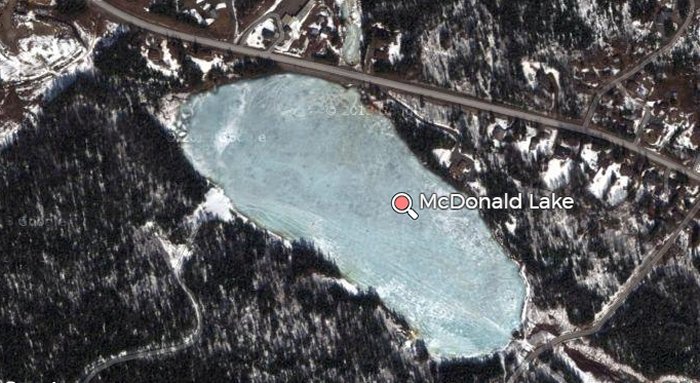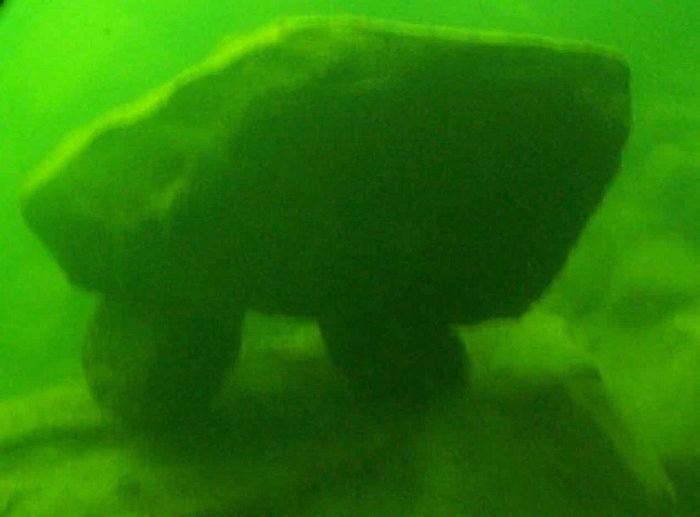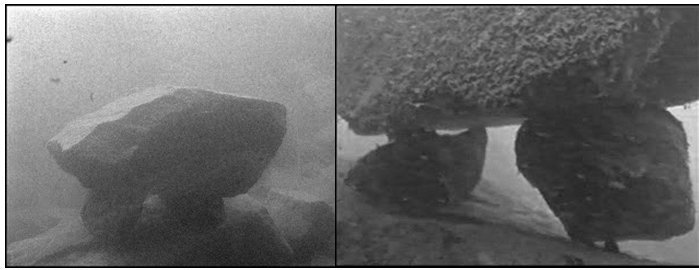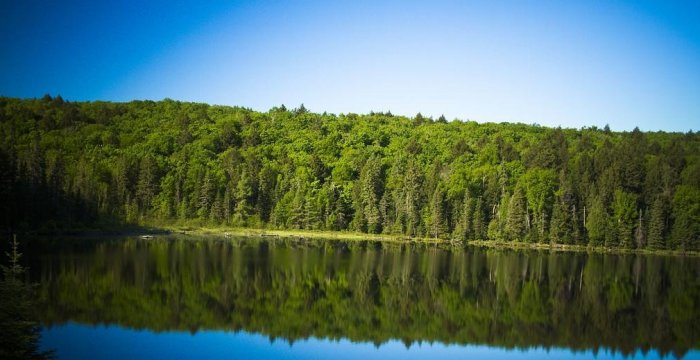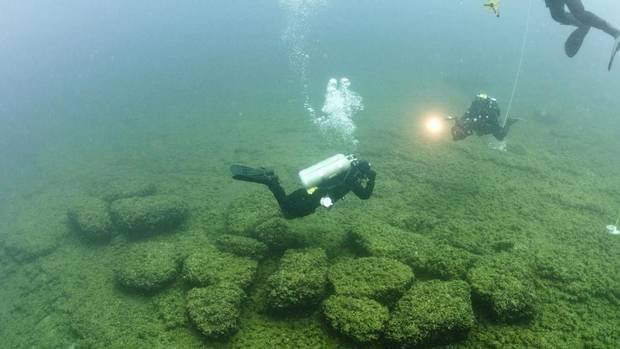Mysterious Ancient Underwater Structure Beneath MacDonald Lake Reveals Traces Of A Lost Civilization In Ontario
Ellen Lloyd - AncientPages.com - A mysterious ancient underwater structure hidden beneath MacDonald Lake reveals traces of a lost civilization present in Ontario, Canada thousands of years ago. Who were these people? Where did they come from and what happened to them? The discovery raises a number of unanswered questions.
The discovery was made by divers participating in a unique submarine project at the acclaimed Haliburton Forest and Wild Life Reserve. Haliburton Forest is a premiere Ontario attraction, well known for its commitment to education, wildlife and the environment.
At first, divers who examined the puzzling underwater structure thought it was a geological formation, but later studies it was a manmade object. The puzzling stone structure was found at a depth of 40 feet (12 m) below the surface. It consists of a massive 1,000 lb (453 kg) elongated rock with an almost completely level surface resting on 7 baseball-sized stones, which in turn sits on a huge several thousand-pound slab on top of a ledge.
Geologists and archaeologists were puzzled by ancient structure’s straight edges and lack of roundness. It seemed the stone could not be one of the rocks scoured by glaciers.
An underwater archaeologist who examined the structure took photos of the stone. He concluded that the existence of 3 shims was proof that the assembly of now seven rocks was the result of human activity and not a fluke of nature. Haliburton Forest turned to the services of a statistician to calculate the probability of 7 rocks falling on top of each other creating a "structure". Albeit difficult to assess, he reported back that even 4 rocks creating a natural structure was almost unattainable, but that the probability of 7 rocks hitting at the right time and place was virtually impossible.
Geologists and archaeologists examined the underwater structure beneath MacDonald Lake and concluded it's man-made.
So, if the underwater structure was not of natural origin, then it must be man-made, but who were its creators? When was the structure erected and for what purpose?
See also:
Man-Made Remarkable Underwater Structures Could Rewrite History Of Wisconsin
Divers continued to examine the mysterious underwater structure, searching for any signs of the use of tools, decorative images or other irregularities but found none of the kind. The thick layer of silt covering the vertical surfaces suggested that no human had touched the stone for a very long time.
There is geological evidence that Eastern North America experienced a dramatic drought between 9000 and 7000 BC. Conditions were so dry during that time that lake levels in the Great Lakes were up to 50 meters lower and inland lakes, like McDonald Lake, which were still fed by spring melt and summer rainwater, were assumed several dozen feet lower than their present water levels.
However, this does not answer the question of why during a time when so few people inhabited Ontario a small group would deliberately select remote MacDonald Lake for a stone cairn, especially such a large, elaborate one.
Biological data shows that McDonald Lake is home to an ancient, glacial relic lake trout, which had survived several bouts of glaciation and retained unique features, which allowed it to survive, where other fish had perished. This suggests that McDonald Lake, in prehistoric times was not a lake, but part and north-westerly end-point of an ancient river system which, for millennia, funneled glacial meltwater south into what was then mighty Lake Agassis.
The special environmental conditions the place had to offer in ancient times could have been the reason why our ancestors decided to live in the region.
Many questions still remain unanswered and perhaps we will never find the truth, but it doesn’t make the discovery less intriguing. There are several puzzling ancient man-made underwater structures discovered world-wide that show us there is still a lot we don’t know about our past. For example, archaeologists exploring Lake Huron, one of the five Great Lakes of North America have found traces of an ancient lost civilization that is twice as old as Stonehenge and the Great Pyramids of Egypt.
Traces of a civilization twice as old as the Stonehenge and the Great Pyramids have been discovered in Lake Huron.
A number of man-made remarkable underwater structures were also discovered in Wisconsin.
Beneath the waters of our oceans and lakes lie sunken buildings, roads, entire cities, pyramids and artifacts belonging to long lost and forgotten civilizations. In the near future, we will, without doubt, learn more about these amazing underwater structures that wait to be discovered and reveal their ancient secrets.
First version of this article was published on July 4, 2016.
Written by - Ellen Lloyd – AncientPages.com
Copyright © AncientPages.com All rights reserved. This material may not be published, broadcast, rewritten or redistributed in whole or part without the express written permission of AncientPages.com
More From Ancient Pages
-
 How Ramesses II Became The Greatest Pharaoh In Egypt
Featured Stories | Jun 6, 2021
How Ramesses II Became The Greatest Pharaoh In Egypt
Featured Stories | Jun 6, 2021 -
 Machu Picchu Is Older Than Previously Thought – New Study Reveals
Archaeology | Aug 4, 2021
Machu Picchu Is Older Than Previously Thought – New Study Reveals
Archaeology | Aug 4, 2021 -
 Why Was Alexander A Great Military Genius?
Ancient History Facts | Oct 23, 2018
Why Was Alexander A Great Military Genius?
Ancient History Facts | Oct 23, 2018 -
 Prophetic Dream Revealed Priceless Ancient Treasure That Was Later Stolen Or Destroyed – Was The Discovery Too Dangerous?
Featured Stories | Jul 27, 2018
Prophetic Dream Revealed Priceless Ancient Treasure That Was Later Stolen Or Destroyed – Was The Discovery Too Dangerous?
Featured Stories | Jul 27, 2018 -
 Tokoloshe: Demonic Creature That Feeds On Spiritual Energy Of Its Victims
African Mythology | Sep 9, 2020
Tokoloshe: Demonic Creature That Feeds On Spiritual Energy Of Its Victims
African Mythology | Sep 9, 2020 -
 Cousin-Marriages Were Uncommon In The Ancient World
Archaeology | Sep 14, 2021
Cousin-Marriages Were Uncommon In The Ancient World
Archaeology | Sep 14, 2021 -
 Long-Lost Ancient Tomb Of ‘China’s Shakespeare’ Finally Found
Archaeology | Aug 31, 2017
Long-Lost Ancient Tomb Of ‘China’s Shakespeare’ Finally Found
Archaeology | Aug 31, 2017 -
 Long-Standing Mystery Of What May Have Triggered Ice Age Solved – New Study
Archaeology | Jun 24, 2022
Long-Standing Mystery Of What May Have Triggered Ice Age Solved – New Study
Archaeology | Jun 24, 2022 -
 Hundreds of Monumental ‘Kites’ Spotted in Arabian Desert
Archaeology | Sep 12, 2022
Hundreds of Monumental ‘Kites’ Spotted in Arabian Desert
Archaeology | Sep 12, 2022 -
 Obeah: Who Were The Feared Shadow Killers Of Jamaica?
Ancient Traditions And Customs | Sep 24, 2018
Obeah: Who Were The Feared Shadow Killers Of Jamaica?
Ancient Traditions And Customs | Sep 24, 2018 -
 Neanderthals Buried Their Dead – New Evidence
Archaeology | Dec 10, 2020
Neanderthals Buried Their Dead – New Evidence
Archaeology | Dec 10, 2020 -
 Royal Tombs Of Alexander The Great’s Family At Vergina, Greece Finally Identified
Archaeology | Jan 31, 2024
Royal Tombs Of Alexander The Great’s Family At Vergina, Greece Finally Identified
Archaeology | Jan 31, 2024 -
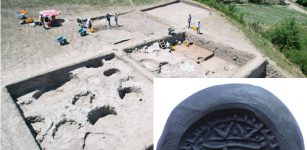 3,300-Year-Old Mycenaean-Like Seal And Dagger Discovered In Turkey
Archaeology | Jul 22, 2022
3,300-Year-Old Mycenaean-Like Seal And Dagger Discovered In Turkey
Archaeology | Jul 22, 2022 -
 Female Pharaoh Twosret Was Exploited, Used And Almost Erased From History
Featured Stories | Apr 11, 2019
Female Pharaoh Twosret Was Exploited, Used And Almost Erased From History
Featured Stories | Apr 11, 2019 -
 Curse Of Evil Eye: Powerful Ancient Belief That Still Frightens People Around The World
Featured Stories | May 9, 2017
Curse Of Evil Eye: Powerful Ancient Belief That Still Frightens People Around The World
Featured Stories | May 9, 2017 -
 Trolls – Fascinating Mythical Creatures Of Scandinavia
Featured Stories | Jun 13, 2022
Trolls – Fascinating Mythical Creatures Of Scandinavia
Featured Stories | Jun 13, 2022 -
 The Brujo De Chiloé – The Wild Warlocks Of The Chiloé Archipelago
Featured Stories | May 4, 2022
The Brujo De Chiloé – The Wild Warlocks Of The Chiloé Archipelago
Featured Stories | May 4, 2022 -
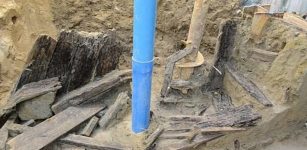 Archaeologists Discover A Secret Escape Tunnel In Copenhagen, Denmark
Archaeology | May 5, 2020
Archaeologists Discover A Secret Escape Tunnel In Copenhagen, Denmark
Archaeology | May 5, 2020 -
 Artificial Intelligence And Clay Tablets: Not Yet A Perfect Match
Scripts, Paintings & Inscriptions | Oct 12, 2023
Artificial Intelligence And Clay Tablets: Not Yet A Perfect Match
Scripts, Paintings & Inscriptions | Oct 12, 2023 -
 Chaneques: Mischievous Legendary Tricksters In Mexican Folklore
Featured Stories | Apr 14, 2020
Chaneques: Mischievous Legendary Tricksters In Mexican Folklore
Featured Stories | Apr 14, 2020

